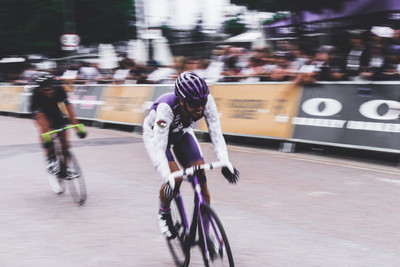
Training for a Triathlon with Spinning® – Part 1
Posted by Spinning® on Apr 18th 2018
Ask any of the participants in your Spinning® class, and chances are that a few will have already completed a triathlon. The odds are even better those participants either know someone who has completed a triathlon or want to compete in one themselves.This is great for your Spinning classes! Having a performance goal outside of class gives our riders a real sense of focus, direction and excitement. It not only benefits their commitment to their specific training (like swimming, biking and running), but also gives them a much clearer focus when participating in their Spinning classes. Our job is to ensure we support them in getting the most effective training benefits during their indoor cycling sessions. This will translate into improvement in their outdoor riding and their race results.
The Spinning Energy Zones™ and Program Planning
The Spinning Energy Zones™ were created with performance gains in mind. An athlete using heart rate parameters will see incredible gains when they work at intensities that are suited to a particular stage of their training cycle. For someone new to Spinning, the Energy Zone may just seem like a fun way to label classes. However, when a person begins to train for performance, you may notice a shift. They will start to become more interested in and understand the real necessity and benefit of having a structured plan to their weekly rides.Each Energy Zone can be matched perfectly to the various cycles that exist in a periodized training year. This is key to keeping our triathletes coming back to classes and giving them the option to ride indoors when they cannot ride outside. When people train to race, a class needs to be about much more than just fun, music and sweat. They have a plan, they want results, and every single hour of training is focused on making them the fittest and fastest athlete they can be when race day comes. Your classes most definitely can support their pursuits.Periodization Defined
Simply defined, periodization is when a set period of time (like a season or year) is divided into training periods. These periods then have a different focus and allow for the manipulation of volume and intensity to meet fitness requirements that are specific and necessary to peak for race day.With periodization, the periods of training refer to time. These periods are referred to as Prep, Base, Build, Peak, Race and Transition (Friel, 2009). Each period has a specific training focus. The closer these periods get to race day, the more specific to race conditions they become (Friel, 2009).In order for a person to create a personalized annual training plan, they would need to establish a number of key factors:1. When are they racing
2. How many training hours they can manage on average each week?
3. How many sessions can they do each day?
Other than the above there are certainly a number of other considerations to include in order to create a successful plan, such as limiting factors, strengths and race goals. However, this is definitely a good starting pointing for anyone completing their first triathlon.Once a training plan is established, the athlete will then be able to identify what period they are in and therefore what type of training sessions they should be doing during that period. Basically, a yearly plan is established by working backwards from the date of the athlete’s race.The table below illustrates the periods over the course of a year and how we can use the Spinning Energy Zone class formats to suit each period.
